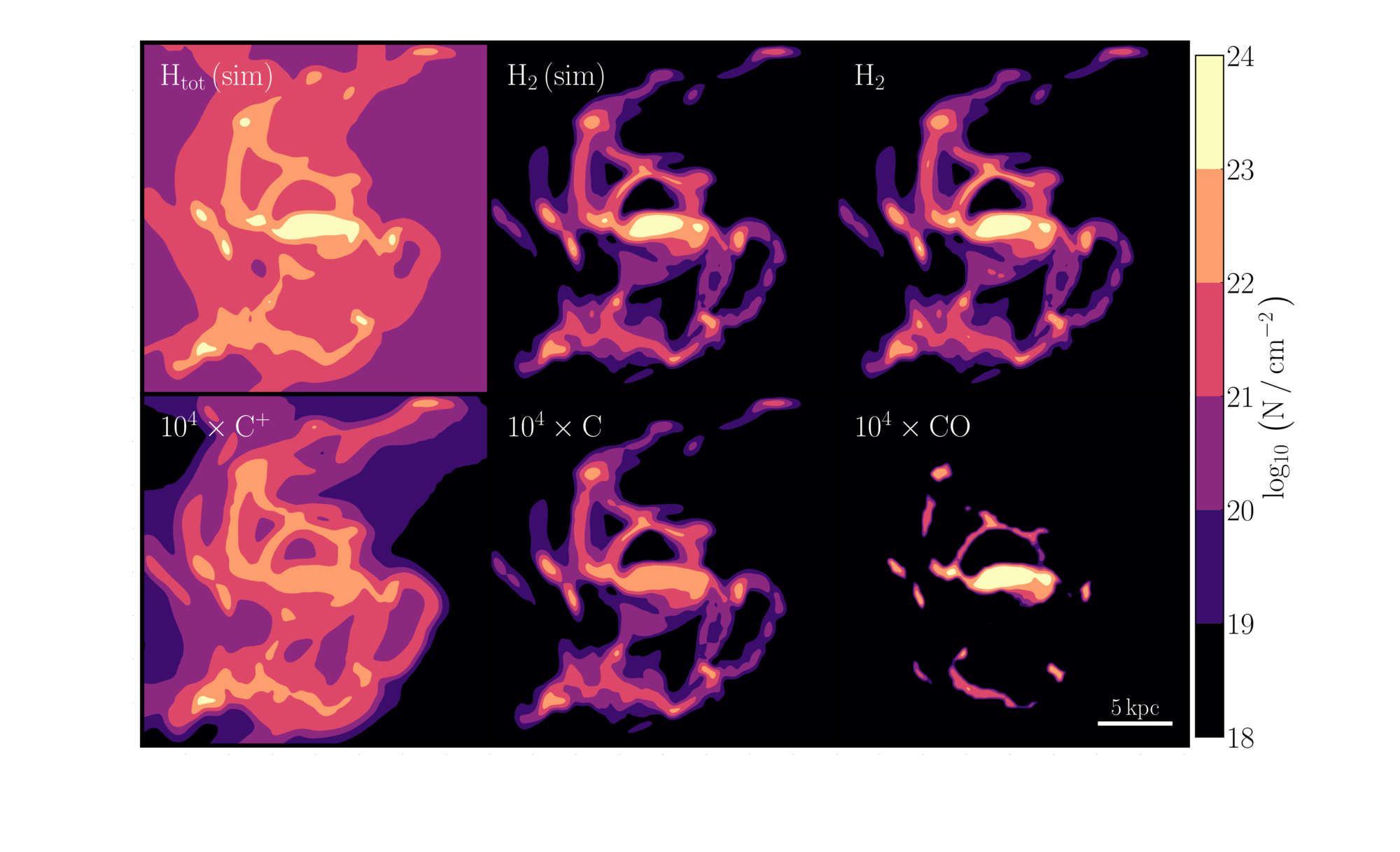Modelling the molecular gas content of galaxies is a highly non-linear, multi-scale problem in astrophysics. On one hand, it is necessary to simulate galaxies in realistic environments as they are affected by outflows and gas accretion from the cosmic web. On the other hand, molecular-cloud chemistry is regulated by conditions on sub-parsec scales.
To overcome this challenge, we have developed a new sub-grid model, HYACINTH – HYdrogen And Carbon chemistry in the INTerstellar medium in Hydro simulations – that can be embedded into cosmological simulations of galaxy formation to calculate the non-equilibrium abundances of molecular hydrogen and its carbon-based tracers, namely, CO, C, and C+ on the fly. Our model captures the effects of the ‘microscopic’ (i.e., unresolved) density structure on the ‘macroscopic’ (i.e., resolved) chemical abundances in cosmological simulations using a variable probability distribution function of sub-grid densities within each resolution element.
The chemical abundances from HYACINTH are in good agreement with observations of nearby and high-redshift galaxies. We are now running a suite of cosmological galaxy formation simulations with HYACINTH that will allow us to address fundamental questions regarding the contribution of different galaxies to the global H2 budget and the reliability of different molecular gas tracers across ISM conditions and galaxy environments at high redshifts (z ≳ 3).
The paper describing the model has been accepted for publication in A&A.
DOI: 10.1051/0004-6361/202449640
Figure caption: Column density maps of different species in a pre-simulated galaxy (from Tomassetti et al. 2015) post-processed with HYACINTH. The first two panels show the distribution of total and molecular hydrogen from the simulation, while the other panels show the species obtained in post-processing. CO is concentrated in regions with the highest N(H2), while C and C+ are more widespread; C+ even extends out to regions lacking a significant amount of H2and closely mirrors the total gas distribution.

